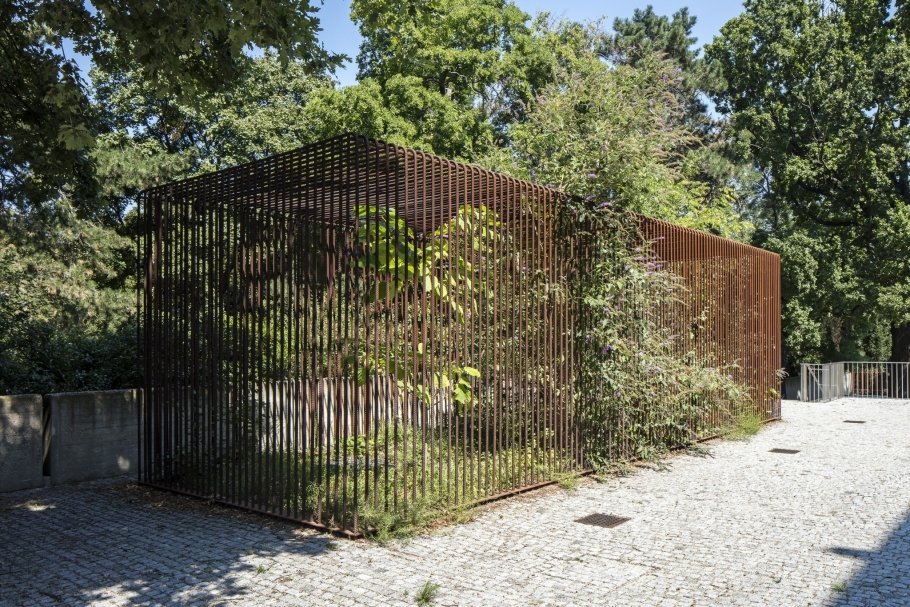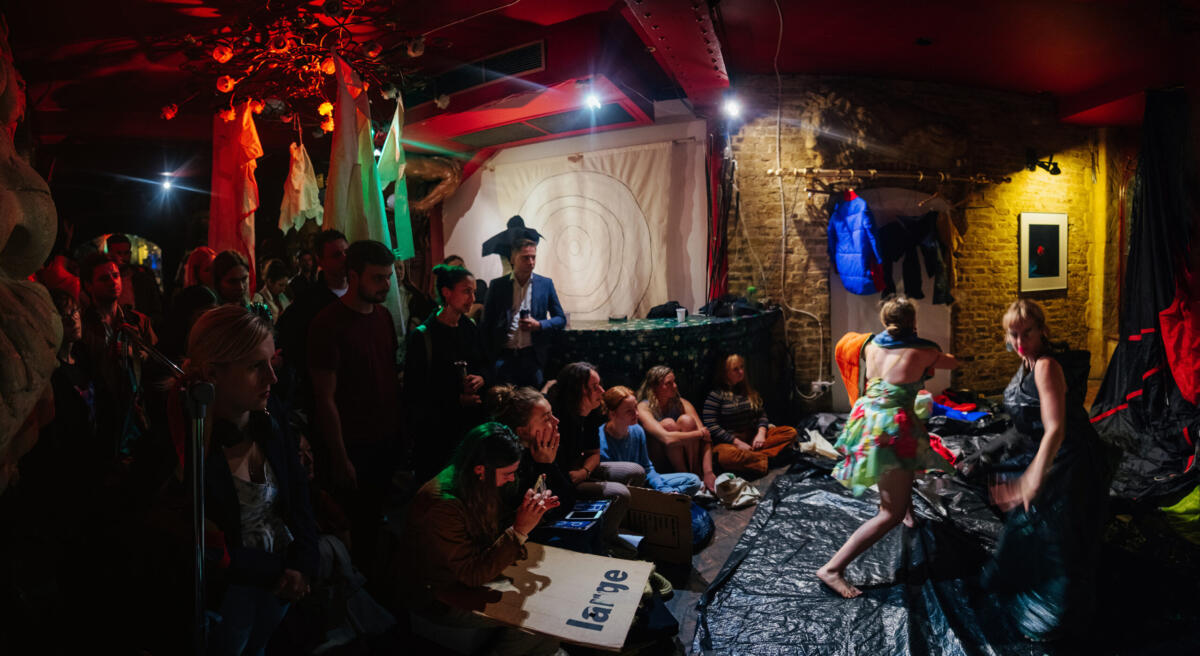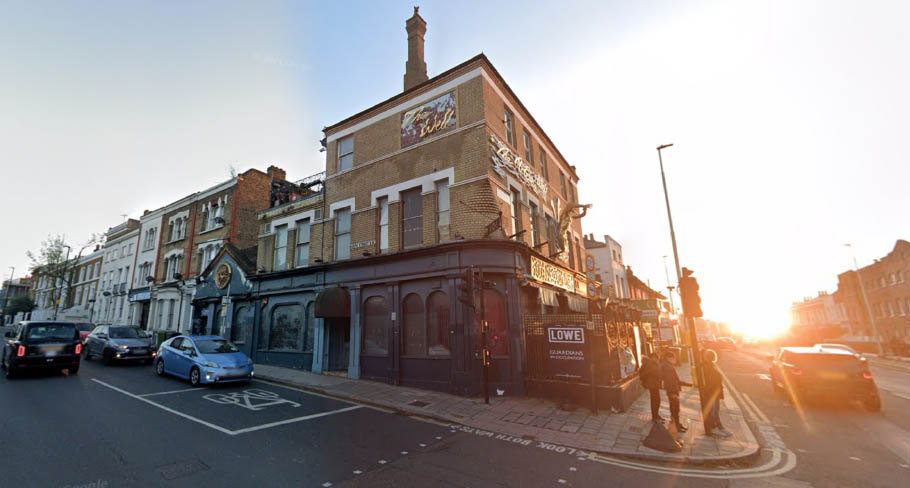Briar-Patching
rewilding the grid to decertify the white cube
Charlie Hawksfield
The grid is what we use to measure things. We are all somewhere on a grid. Euclidian space is based on a grid. Rooms, houses, fields, roads and cities are decided by variations on grids. Grids and cells and boxes are a way for the human brain to understand and metres out its essential values of time and space. Human action, within a cell within a grid, within a white cube is countable. An action, habit or service is easily quantified. We are living in measured space, we are living in measured time.
The white cube is the fantasy unit in this system, the ground zero spacial dream of capitalism. It annihilates all unprofitable distractions. It’s sterilisation (literally meaning-to destroy the fertility of..) the space is an act of attention-setting. A whitewashing process of the walls, floors and ceilings (as if white has no connotations or meaning.) eliminates even the trace of the box one is in. The bright lights fix the eyeballs of the viewer on the art/capital-object, burning its particular fascination to the retina, this is the profiteer’s ecstasy, the ultimate showroom atmosphere in which to assign arbitrary value to the inherently unmeasurable. This is a ‘futurefied’ space.
A briar patch is defined as “a thicket formed by any of a number of unrelated thorny plants.” In a Briar Patch there are no discernible straight lines or right angles, there is certainly no grid. To isolate, demarcate, categorise, familiarise or even identify each plant species would be a long and painful task. To draw undiluted attention to any one capitalisable object would be futile. Instead of attention domination, rationalisation and quantifiability; wildness, disorder and confusion reign.
Briar Patches are the first stage of a re-wilding process (many such projects can be found in rural conservation areas) To rewild you need an area willing to drop out of the quantified, managed grid, i.e. a liminal space is needed, a space outside a human system. In the city you may find a briar patch in a disused industrial car park or between back gardens, or along railway sidings but they are rare.
Lois Weinberger’s seminal piece Wild Cube consisted of a gridded cage which instead of including matter for human management and quantification, it excluded humans and allowed nature to take its course. The first iteration of this project caused uproar from the local residence as the cage collected only rubbish, scrub and weeds, but as the years went on the briar patch gave way to a flourishing of natural greenery. In time the initial spleen of the residence gave way to pride in their public work of art. Thus the control of the future, the ‘futurefying’ of the cube was inverted.

The owners of The Artesian Well Nightclub plan to measure their space in neat units of commercialised and domesticated real estate - to grid, sterilise and ‘futurefy’ the space. By speculating around the grid - i.e. using the favourable market predictions of London real estate, they plan to push the value of their property into the near-future and effectively render the present valueless, In this process, they replicated the worst trait of modern capitalist management, namely to turn a blind eye to direct consequences of the system in favour of profitable mid-term market predictions. The two victims of this crime are the present and the long-term future. In an inversion of Weinberger’s Wild Cage, developers focus on the mid-term, which is the domain of populism and knee-jerk politics- the quelled disgruntlement of the residence.
Under this system, the present is liminal. The present is a constant edge. In the highly financialised world of London property, only the mid-term is important. For the planning and selling and developing process; the present, the brick, mortar, dust, damp, rats, mould, peeling wallpaper, murals, glitter-balls, golden sculptures, filthy carpets, crimson walls, creaking floorboards needs eliminating- white cubing. However, this was the present we lived in, this is where we grew our briar patch.
Wells Projects grew like a briar patch in the present. The conditions were unique. Under the current planning system developers are often frustrated in their attempts to capitalise on mid-term speculation by urban bureaucracy and protection. This sometimes leaves buildings empty - frozen in their pre-white-cubed state. Companies have arisen to stockpile low wage earners into these financially stagnated spaces or as long as the pesky present takes to clear. Briefly the finacio-grid was turned into a Wild Cube.
Wells Projects grew, it did not come about from a set plan. We did not manage the space from manus (latin for hand) we did not lay our hands on the space, we did not farm or agriculturalise the space. We hosted. we played host, parasitically, we facilitated. The language of redevelopment, placemaking, gentrification is a lexicon of urban agriculture (agriculture, from the latin field-growing) grid growing, growing for measurement, growing for the populist mid-term, the financial temporal sweet spot, under late capitalism - individual profit.
Our operation as Wells Projects was horticultural, from the latin for garden. We were gardeners. Paradise literally means garden, the “Garden of Paradise” literally means the garden of garden. A Garden city is a bastardisation of the term. First you need a briar patch. What was there before any human manus? A briar patch. The urban equivalent of thistles and weeds are the outsiders of the urban system, the rats, weirdos, unsuccessful entrepreneurs, struggling artists and uncouth members of society - the place fillers, the disposable packaging of the system. Weeds are classed as “any plant that is not wanted” replace plant with consumer and you have the raw material of Wells Projects.

/ Wells Projects ran as a non-profit, free-to-use, artist-led space from 2018 to 2020, showcasing over 200 creatives in a wide range of disciplines
Garden gardening is rewilding. It involved minimal management, (ghost state) total inclusion and de-financalisation. This ethos of facilitation-for-free; a suck-it-and-see experimentation is anathema to the free market economy. To allow chaos to prevail and profit to suffer as collateral turns the current state of affairs on its head - this is the resident disgruntlement stage, think tax rises and refugee quotas. Garden gardening, rewinding or briar patching is to stay your hand and let mistakes, experiments and failure happen as part of a natural growing process, to lose money without a recoupable future, ‘de-futurefying’. It can never be assigned monetary value.
However the grid is always present. Although our Briar patch was grown in the liminal space of the Artesian Wells, the tightly structured and regulated cage of property speculation eventually strangled us from above. Unwilling to expend capital on the liminality of our space the building disintegrated. The roof fell in. The basement flooded. The power cut out almost weekly. Mushrooms grew out the walls. We began to get sick. The hands and eyes of the management were fixed on the sterile future, drawn on clean white paper in the goldmine of the speculative, digital realm. The flowering of our briar patch, the emergence of a garden garden, was never going to be allowed to happen.

What is the psychological past and future to the modern subject/object if not memory and imagination? The psychological burden of financial mid-terming, or ‘futurefying’ systems, harnessing nostalgia and colonising news cycles is debt. ‘Futurefying’ systems do not plan for the future, but draw the limits of the future and past within the grid of financial gain, i.e. the midterm. The past (memory) is infected by nationalistic nostalgia, the future (imagination) is fixated on gain. The result is a debt, financial, ecological and psychological, debt to the past and debt to the far- future. Memory debt in the form of depression and imagination debt in the for of anxiety. The ecological crisis is a debt that has turning into what Morton describes as a Hyper-object. The thorns in our briar patch are the debts of a generation who are told their future is doomed by the systems which they cannot escape, systems that poison memory and imagination, past and future in gridded, financialised time.
Wells Projects proposes to rewild the grid wherever it can, to break mid-terming and ‘futurefied’ systems. To turn interior grids of management and control into wild cubes of minimal management and garden gardening - the pure pre-gardening stage, that rewinds and cultivates despite mess, ugliness and financial loss. We will use our space in Westminster to cultivate a briar patch of art experiments and cross pollination. We will run each exhibition into each other. We will tangle references, ideas and proposals into a web of associations, happenings and risks. We will take a white cube, the basic unit of gridded space and rewind it from the inside out. This is the viral process left to us, in a grid as tightly controlled as London we must get inside the individual cells and grow our briar patches. 
Charlie Hawksfield
is an artist and Director of Wells Projects
charliehawksfield.com
thewellsprojects.com
TO HELP WELLS PROJECTS MOVE FORWARD
PLEASE CONSIDER DONATING TO THEIR
FUNDRAISER
